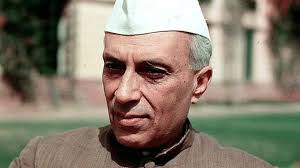The Government of India Act 1919 was essentially transitional in character. Under Section 84 of the said Act, a statutory Commission was to be appointed at the end of ten years to determine the next stage in the realization of self-rule in India. Accordingly, the Simon Commission was sent to the Sub-continent under the command of Sir John Simon. All members of the commission were British. This was regarded as highly insulting to the Indians and immediate protest was raised from all the important political parties. When the Simon Commission arrived, the local masses welcomed it by with slogans of “Go back Simon!”. All the major political parties of Sub-continent, except the Shafi League of Punjab, boycotted the Simon Commission.
After the failure of Simon Commission, there was no alternative for the British government but to ask the local people to frame a constitution for themselves. They knew that the Congress and Muslim League were the two main parties and that they both had serious difference of opinions. Birkenhead, Secretary of Sate for Indian Affairs, threw the ball in the Indian politicians’ court, and asked them to draw a draft of the forthcoming Act on which both Hindus and Muslims could agree. The Indian leaders accepted the challenge and for this purpose, the All Parties Conference was held at Delhi in January 1928. More than a hundred delegates of almost all the parties of the Sub-continent assembled and participated in the conference. Unfortunately, the leaders were not able to come to any conclusion. The biggest hindrance was the issue of the rights of minorities. The second meeting of the All Parties Conference was held in March the same year, but the leaders still had their differences and again were not able to reach a conclusion. The only work done in this conference was the appointment of two subcommittees. But due to the mutual differences between Muslims and Hindus, the committees failed to produce any positive result.
When the All Parties Conference met for the third time in Bombay on May 19 1928, there was hardly any prospect of an agreed constitution. It was then decided that a small committee should be appointed to work out the details of the constitution. Motilal Nehru headed this committee. There were nine other members in this committee including two Muslims, Syed Ali Imam and Shoaib Qureshi.
The committee worked for three months at Allahabad and its memorandum was called the “Nehru Report”. The chairman joined hands with the Hindu Mahasabha and unceremoniously quashed the recent Congress acceptance of the Delhi Proposals. The Nehru Report recommended that a Declaration of Rights should be inserted in the constitution assuring the fullest liberty of conscience and religion.

The following were the recommendations advanced by the Nehru Report:
- India should be given the status of a dominion.
- There should be federal form of government with residuary powers vested in the center.
- India should have a parliamentary form of government headed by a Prime Minister and six ministers appointed by the Governor General.
- There should be bi-cameral legislature.
- There should be no separate electorate for any community.
- System of weightage for minorities was as bad as that of separate electorates.
- Reservation of Muslim seats could be possible in the provinces where Muslim population was at least ten percent, but this was to be in strict proportion to the size of the community.
- Muslims should enjoy one-fourth representation in the Central Legislature.
- Sindh should be separated from Bombay only if the Committee certified that it was financially self-sufficient.
- The N. W. F. P. should be given full provincial status.
- A new Kanarese-speaking province Karnatic should be established in South India.
- Hindi should be made the official language of India.
The recommendations of the Nehru Report went against the interests of the Muslim community. It was an attempt to serve Hindu predominance over Muslims. The Nehru Committee’s greatest blow was the rejection of separate electorates. If the report had taken into account the Delhi Proposals, the Muslims might have accepted it. But the Nehru Committee did not consider the Delhi Proposals at all while formulating their report. The Muslims were asking for one-third representation in the center while Nehru Committee gave them only one-fourth representation. It is true that two demands of Muslims were considered in the Nehru Report but both of them incomplete. It was said that Sindh should be separated from Bombay but the condition of self-economy was also put forward. It demanded constitutional reforms in N. W. F. P. but Baluchistan was overlooked in the report.
Of the two Muslim members of the Nehru Committee, Syed Ali Imam could attend only one meeting due to his illness and Shoaib Qureshi did not endorse views of the Committee on the issue of Muslim representation in legislature. Thus the Nehru Report was nothing else than a Congress document and thus totally opposed by Muslims of the Sub-continent. The Hindus under Congress threatened the government with a disobedience movement if the Nehru report was not implemented into the Act by December 31, 1929. This Hindu attitude proved to be a milestone in the freedom movement of the Muslims. It also proved to be a turning point in the life of Muhammad Ali Jinnah. After reading the Nehru Report, Jinnah announced a ‘parting of the ways’. The Nehru Report reflected the inner prejudice and narrow-minded approach of the Hindus.
This article was last updated on Sunday, June 01, 2003






